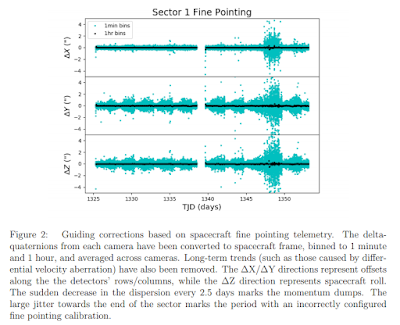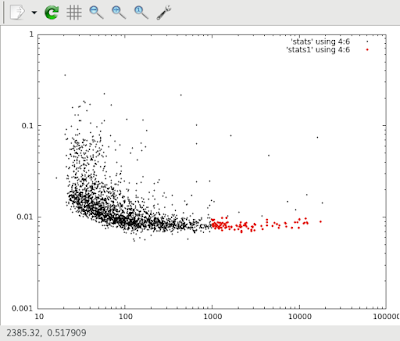This is the short story: got a 'new' computer a few years ago. Turned it on, installed Linux, made all the updates, ready to go.
Monsoon storm zapped the ethernet on the motherboard. Couldn't get a USB ethernet adapter to work.
Few months later, tried another ethernet adapter and that worked. Finished all the updates and was ready to go. Oh, one last thing -- updated the operating system from Fedora 26 to Fedora 28. Did this, and then saw that the ethernet adapter wasn't working again. Threw in the towel -- put the machine in storage where it was for a couple years.
Got ANOTHER ethernet adapter. Pulled the machine out of storage and tried it. It worked right away. Updated python, got all the astronomical python libraries installed, etc, etc, etc. Upgraded from 2 to 8 GB of memory. Now I'm really rip-roaring ready to go!
Last weekend I planned on moving from my current 'work' computer to this 'new' one. Went to turn it on and ----- nothing. It won't turn on! Fans spin for about 1 second and then stop. From what I can tell, this means that something happened to the motherboard.
So now the machine is sitting on the floor giving me the finger (again!!) and I'm just staring at it.
Frustrating....
Independent Research Astronomer and Space Musician
Come with me and re-discover the universe!
More info via links on the right.
Saturday, June 20, 2020
Wednesday, June 17, 2020
Fire in the Catalinas (61" Kuiper, Catalina Sky Survey, etc)
Another big fire in the Catalina mountains north of Tucson. This mountain range is the home of many observatories, including the 61" scope on Mt Bigelow I used for my white dwarf photometry work back in the early 90's, and the Catalina Sky Survey on Mt Lemmon which is hunting for near-earth and earth-crossing asteroids. There isn't a lot of vegetation at the CSS site, so if they're vigilant it'll be ok as far as fire protection goes. The 61" (there's also a 16" Schmidt camera there), though, is surrounded by trees.
In both cases, the SMOKE is gonna be a big problem.
Take care of yourselves up there!
In both cases, the SMOKE is gonna be a big problem.
Take care of yourselves up there!
Thursday, June 11, 2020
RTFM -- Tess Sector 1 Manual!
All I have to do is RTFM and many (maybe all???) of my TESS questions are answered!
https://archive.stsci.edu/missions/tess/doc/tess_drn/tess_sector_01_drn01_v02.pdf
Citizen Science rant that I almost posted to the SETI youtube channel ...
... but changed my mind and posted it here instead where it's guaranteed to never be seen by anyone except YOU!
Here is it:
Here is it:
The term 'Citizen Science' as it's currently being used is very deceptive. The person you interviewed is nothing more than a 'Data Collector'. Don't get me wrong! Data collection is VERY important and is very exciting and technical, but he's not doing science! They're fooled into thinking they're actually doing science by YOU calling it 'Citizen Science' to make what they are ACTUALLY doing sound a little more appealing. All they're doing is participating in the scientific process, part of which is the tedious process of data collection. Tedious AND expensive! So you fool these people into willingly and happily collect the data for you -- for free!!! Tom Sawyer did the same thing and got away with it just like you are. Brilliant.
Are any of these 'Citizen Scientists' co-authors or authors on any papers, or are they maybe just mentioned in the acknowledgements? If the former, then yes they are 'Citizen Scientists'. But if the latter, they are 'Data Collectors'.
Wednesday, June 10, 2020
Steady Stars
Here are stars in the Sector 1 field of view. Note that both axes in this plot are on a logarithmic scale. The x-axis is the brightness (larger numbers, brighter star). The y-axis is the 1-sigma standard deviation as a percentage of brightness (smaller number, more precise or more steady).
Here are the stars that fall into those categories (marked in red) have a brightness of more than 1000 and a percent deviation of less than 1%:
Here's a plot (on a linear scale) showing a sample of these stars -- the brightest ones (8 stars in this sample of about 2400 have values greater than 10000):
Very interesting that even these aren't so steady.
Not sure what's going on with the data from data points 1000-1100. Also not sure why there's a discontinuity in all the data about mid-way through. There may be other systematic things that I need to understand and make sure I take into account.
I need to look at some fainter stars that are also steady to see how those light curves look.
Here are the stars that fall into those categories (marked in red) have a brightness of more than 1000 and a percent deviation of less than 1%:
Here's a plot (on a linear scale) showing a sample of these stars -- the brightest ones (8 stars in this sample of about 2400 have values greater than 10000):
Very interesting that even these aren't so steady.
Not sure what's going on with the data from data points 1000-1100. Also not sure why there's a discontinuity in all the data about mid-way through. There may be other systematic things that I need to understand and make sure I take into account.
I need to look at some fainter stars that are also steady to see how those light curves look.
Monday, June 8, 2020
TESS Overload
I just ran a script that took my machine 21 hours to complete! It measured the brightness of about 2200 stars (identified by the IRAF task 'starfind') in a 1000x1000 pixel area (translating to 6.3 by 6.3 degrees in the sky) of Sector 1, Camera 1, CCD 1. I did this for the entire data acquisition period, which went from day 206 to day 234 of 2018 (29 days!!).
I measured the brightness by the computing the mean and mode of a small sample box centered on the star. The mean value is the brightness of the star plus the background. I noticed quite a while ago that the background does change. I need to investigate why, but for now I'm just accepting it as something that happens. The background in my small box is estimated by computing the mode -- the most common value. The star takes up 3 or 4 of the 49 pixels I'm sampling. The other pixels are part of the background and will be the most common value. To say it in stat verbage: the distribution of brightness is very non-gaussian.
So by subtracting the mode from the mean, I get a rough measurement of the brightness of the star with no varying background.
What I see it astonishing but totally expected! I made some plots. As I said, there are over 2000 stars, so there are 2000+ plots! I put five plots on a single image, so that's only a little over 400 images. Here are some examples to show the diversity. X-axis is image number which will track time. Every point is 30 minutes after the previous one. The y-axis is self-scaled to whatever the data is telling gnuplot is the min and max.
And actually I'm interested in all of this for something completely in left field -- but I think is very important that no-one is talking about.
Which stars vary the least, or are closest to constant? Do 'known' and used standard stars used in photometric measurements show any variation on these timescales? I'm gonna see if there are any Landolt standards in this CCD's field of view.
Looking at all of these plots, there are only a handful that are totally flat (with noise, of course). Are 'constant' stars rare? What conditions make stars 'constant'?
All kinds of interesting questions -- and no one seems to be talking about it.
Anyhow I'm very pleased with this simple and very interesting experiment! Except for the search for the most constant star, I have no idea where this will lead.
I measured the brightness by the computing the mean and mode of a small sample box centered on the star. The mean value is the brightness of the star plus the background. I noticed quite a while ago that the background does change. I need to investigate why, but for now I'm just accepting it as something that happens. The background in my small box is estimated by computing the mode -- the most common value. The star takes up 3 or 4 of the 49 pixels I'm sampling. The other pixels are part of the background and will be the most common value. To say it in stat verbage: the distribution of brightness is very non-gaussian.
So by subtracting the mode from the mean, I get a rough measurement of the brightness of the star with no varying background.
What I see it astonishing but totally expected! I made some plots. As I said, there are over 2000 stars, so there are 2000+ plots! I put five plots on a single image, so that's only a little over 400 images. Here are some examples to show the diversity. X-axis is image number which will track time. Every point is 30 minutes after the previous one. The y-axis is self-scaled to whatever the data is telling gnuplot is the min and max.
 |
| 2nd from the top is an eclipsing binary. |
 |
| 4th from the top is a very complex pattern |
 |
| Top one low amp, high freq. 4th from top is complex again |
And actually I'm interested in all of this for something completely in left field -- but I think is very important that no-one is talking about.
Which stars vary the least, or are closest to constant? Do 'known' and used standard stars used in photometric measurements show any variation on these timescales? I'm gonna see if there are any Landolt standards in this CCD's field of view.
Looking at all of these plots, there are only a handful that are totally flat (with noise, of course). Are 'constant' stars rare? What conditions make stars 'constant'?
All kinds of interesting questions -- and no one seems to be talking about it.
Anyhow I'm very pleased with this simple and very interesting experiment! Except for the search for the most constant star, I have no idea where this will lead.
Subscribe to:
Posts (Atom)



